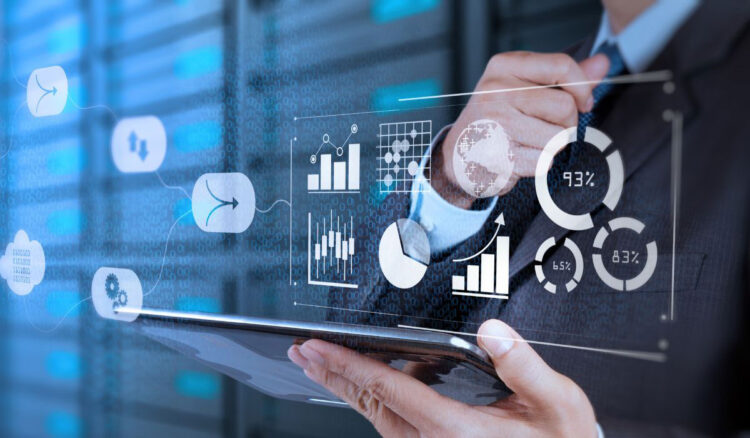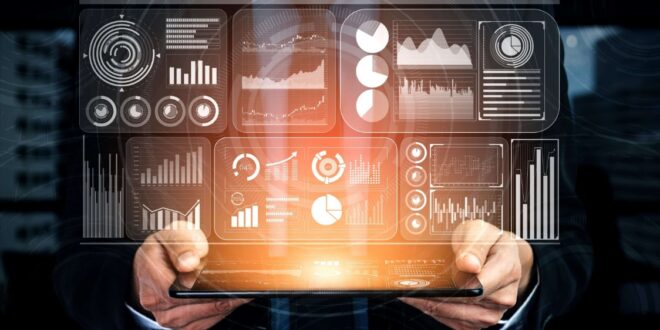How much did you download today? How many emails did you send? How many Instagram photos have you shared? And what about the number of videos you’ve streamed? In 2021, people created no less than 2.5 quintillion bytes of data.
No, not for the entire year — per day! In 2022, people sent 333.2 billion emails. Again, this is an average daily statistic. From social media to scientific research and business analytics, the world churns out huge quantities of Big Data practically every second.
This colossal amount of data can be extremely helpful for your business, as long as you can use it in your favor. For that to happen, you need to analyze it which, in turn, requires enormous processing power.
This is where the cloud rolls in. Offering storage and processing power you can rent, so to speak, it lets you get the job done without investing millions into hardware. Cloud analytics, in particular, is a cost-effective and efficient addition to the world of business.
Big data? The cloud? Analytics? If any of these terms don’t ring a bell, it’s better to define them and know what we’re dealing with before getting into how you can use them for your benefit.
Big Data
As the name implies, Big Data is deemed too large and complex for traditional software to process it. It’s characterized by Doug Laney’s 3-Vs model:
- Volume — It’s huge. Think of the number of images uploaded onto Instagram or messages sent through Whatsapp and you’ll only have considered just a portion of it.
- Velocity — Speed. People generate and share millions upon millions of gigabytes per minute.
- Variety — Documents, images, videos, endless, etc. Data is very diverse, uncategorized, and unstructured.
The Cloud

Most companies don’t have enough resources to deal with big data. Fortunately, there’s always an option to rent the needed infrastructure, including storage space and processing power. Its functions are normally distributed over multiple locations and accessible through the internet.
Providers make them available for a predetermined fee. Some providers (AWS, Azure, Google) offer storage and processing services on the cloud (via IaaS, PaaS, SaaS, and the like). Such a pay-as-you-go approach reduces capital expenses as there is no need to purchase and operate data centers.
Analytics
Big data and the cloud often work together to perform a very specific task — analytics. This integral part of statistics is a systematic computational analysis of data. It relies on recorded information to discover, interpret, and communicate data patterns.
This is very useful in decision-making as you can apply those patterns to describe, predict, and improve performance. It works in marketing, healthcare, software development, banking, and beyond.
2 Types of Cloud Models
This brings us to cloud analytics. Its purpose isn’t too difficult to deduct. It’s the process of storing and analyzing data in the cloud for the purpose of extracting actionable insights. There are three different types.
- Public cloud — The services are available publicly, sometimes for free. Users share IT systems but the data is kept private. It helps reduce the costs of upkeep for the client.
- Private cloud — The pricier option. Reserved for select users. Usually owned by one organization.
How Does It Work?

There is no need for the client company to have any on-premise servers. In the case of vendor-managed infrastructure, the vendor is responsible for setup and maintenance. This brings the business freedom of scalability, improved performance, and cost savings. Data sources used for analytics can include website usage, transactional information, social media metrics, and many others.
So what exactly identifies patterns and develops insights? Business intelligence or cloud BI. This works based on the software-as-a-service (SaaS) model. Tools and technology collect and analyze data through online analytical reporting (OLAP), data and text mining, performance benchmarking, and other tasks. With real-time access, it’s possible to analyze customer behavior, develop revenue strategies, uncover business problems, and optimize performance.
There are many ways to present the findings made through cloud analytics. Creating visualizations, cloud reporting, and dashboards are just some of the options. It’s also possible to embed analytical tools into other applications, such as automated machine learning (AutoML) and artificial intelligence-based software. In addition, you can trigger data-driven events (i.e., alerts and actions) once certain parameters change.
Who Can Use It?
Pretty much anyone can benefit from it but only after carefully integrating it into their business and aligning it with their goals. If you’re a retailer, you can leverage it to improve customer service. If, on the other hand, you run a music streaming platform, you can use cloud analytics to improve song recommendations. A social media influencer will take advantage of it by discovering new trends in the types of content that can gain traction. Even scientists can benefit from it. A geneticist can sequence millions of nucleotides in a genome by relying on cloud power.
What Are the Benefits?

Harnessing big data through cloud analytics comes with multiple benefits, most of which can boost your profits:
- It’s easy to scale up and down as you can increase the use of resources or cut them down if needed.
- It brings down the costs of analytics and the setup is also quicker.
- The vendor is fully responsible for maintenance, safety, and security.
- Cloud analytics can drastically boost productivity.
- It’s a great way to gain new insights and assume a different perspective on running your business.
Is This a Temporary or a Permanent Solution?
The answer to this question again lies in the needs of your enterprise. Working in sales, science, or banking? You can employ cloud analytics as a one-off solution for a specific project. You can also utilize it for a continuous influx of useful info for decision-making.
Harnessing big data in the cloud is something you can fully control. Of course, having a thorough plan always helps. In fact, the clearer your vision, the more you’ll be able to profit from the potential of cloud computing.
 Hi Boox Popular Magazine 2024
Hi Boox Popular Magazine 2024



